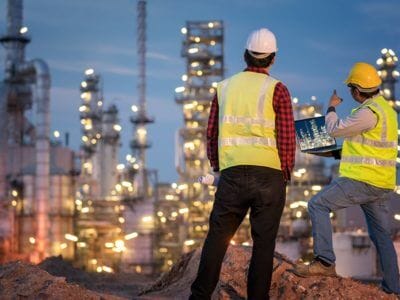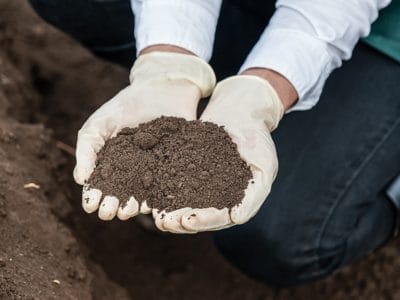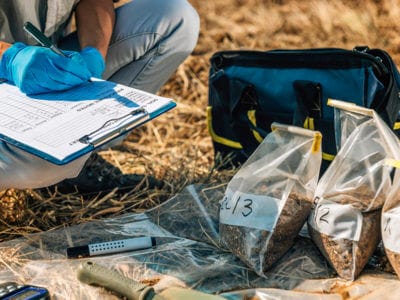
Continuous Ground Gas Monitoring
Uncontrolled subsurface gas migration and emission poses a number of risks
In addition to methane (CH4) and carbon dioxide (CO2) from landfill, numerous trace gases may be present in ground gas, depending on the nature of the contamination or underground activities. Other constituents principally may include carbon monoxide (CO) and hydrogen sulphide (H2S) as well as a cocktail of other hydrocarbons and volatile organic compounds (VOCs).
Subsurface Monitoring – A Guide To Soil/Ground Gas Risk
Uncontrolled subsurface gas migration and emission poses a number of risks to the environment and human health & safety from anthropogenic sources
Natural ground gases such as methane and carbon dioxide are found widely in soils and rocks, as they are an integral component of the geochemical cycle of the Earth. Methane and carbon dioxide can also occur due to the activities of man such as landfilling waste (landfill gas) and by mining (mine gas) .
Uncontrolled subsurface gas migration and emission poses a number of risks to the environment and human health & safety from anthropogenic sources (the general term for gases originating in human activity) such as:-
- landfill waste
- abandoned coal mining
- shale gas production
- contaminated land from past industrial use (some dating as far back as Victorian times)
- pipeline leaks from current industrial processes such as oil refining & chemical manufacture
- Coal bed methane
”In March 1986 a house at Loscoe in Derbyshire was completely destroyed by a methane gas explosion, badly injuring the three occupants. Eight months later at a Public Inquiry, the sequence of events leading up to the incident was established and evidence produced to ascertain the origin of the methane .During the proceedings, it became apparent that signs of ground heating had been detected approximately 100 m beyond the boundary of a near-by landfill some years before the explosion but that the phenomenon had been misinterpreted as a shallow burning coal seam.
Lessons from Loscoe: the uncontrolled migration of landfill gas. G. M. Williams & N. Aitkenhead, Quarterly Journal of Engineering Geology and Hydrogeology (1991) 24 (2): 191-207. Published: May 01, 1991
Migration Pathways
Migration pathways include pore spaces (e.g. in sands or gravels), fractures, joints, bedding planes and fault lines. Anthropogenic influences can increase permeability, for example, by activities such as mine grouting, air blast rotary drilling, blasting and mining. All of these can have potentially catastrophic effects on pathways and ground gas movements. In addition, anthropogenic influences include sewers, granular backfill around services, cable ducts, pipes, service ducts, drains and voids such as inspection pits, under floor spaces and basements, all of which may provide preferential ground gas migration pathways.
Hazards associated with methane and carbon dioxide gases
Detecting Methane: It is well known that the presence of methane gas can be highly hazardous to human health. However, the fact that methane is a colourless, odourless gas means that there is no simple indicator of its presence until such a time as explosive limits are reached and an incident occurs. For this reason, it is vital that sources of methane are identified prior to any work on a (construction) site commencing, and that measures are put in place to prevent a dangerous build-up of gas within buildings.
Detecting Carbon Dioxide: Is also a colourless, odourless gas, which, although non-flammable, is both toxic and an asphyxiant because it displaces oxygen. As carbon dioxide is denser than air, it will collect in low points and depressions, which can be an extreme hazard during foundation construction and earth movements on development sites or in finished buildings and structures.
64 Council houses In Gorebridge, West Lothian. Local health professionals first noted a cluster of health complaints which eventually lead to Midlothian Council calling in consulting and structural engineers (Fairhurst) to carry out an investigation, which resulted in a 195 page report . Fairhurst demonstrated the migration of CO2 from former coal mine workings and as can be seen in Figure 1 below, the pathways are dependent upon the localised geology, in this case predominantly sandstone, clay and sand.
Download our FREE Guide
“Subsurface Monitoring – A Guide To Soil/Ground Gas Risk”
The subsurface monitoring- a guide to soil/ground gas risks which can be downloaded below provides the reader with an in-depth balance of knowledge on landfill gas and natural ground gases which can migrate into buildings or confined spaces and accumulate to asphyxiating, toxic and explosive concentrations. Therefore the risk should be considered for any development of buildings or living quarters. However, there is the possibility to undertake long-term, un-manned, continuous, monitoring using especially designed borehole devices that are battery powered, record multiple gases and make the data available for download to a laptop for later analysis, or, via telemetry.

Related Guides
Ground Gas Detectors For Subsurface Monitoring
Download your FREE Guide
Simply complete the form below to obtain your FREE Guide on “Subsurface Monitoring – A Guide To Soil/Ground Gas Risks”.


















